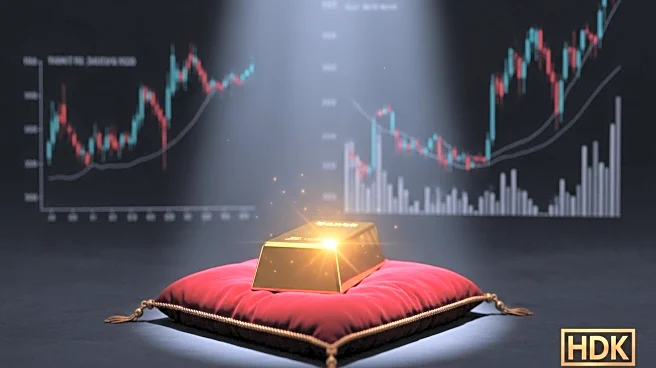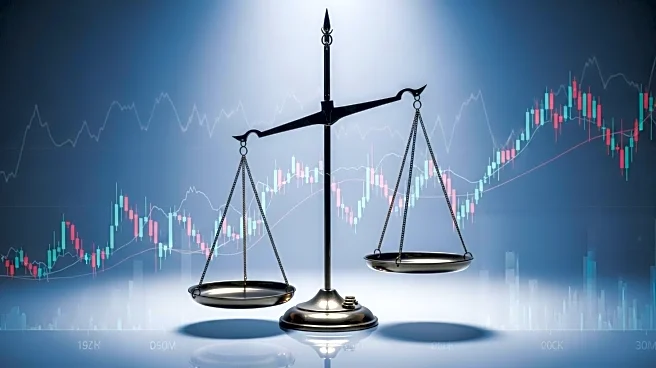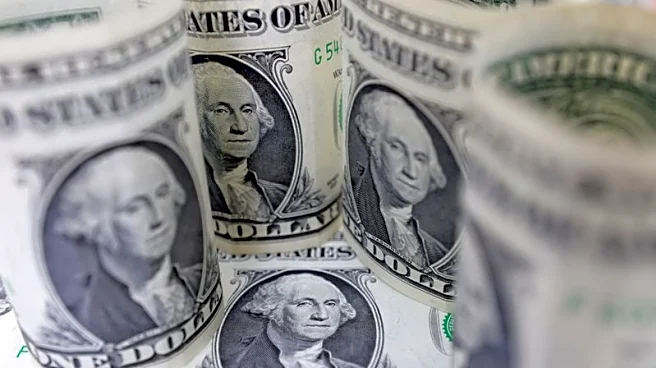What's Happening?
Gold prices have reached a record high, surpassing $4,100 per ounce, driven by expectations of a U.S. Federal Reserve rate cut and heightened trade tensions between the U.S. and China. Spot gold rose to
$4,126.47 per ounce, with U.S. gold futures for December delivery also increasing. The metal's rally, up 57% this year, is attributed to geopolitical uncertainties, strong central bank buying, and robust ETF inflows. Analysts predict gold could reach $5,000 per ounce by 2026, supported by ongoing trade tensions and potential Fed easing. President Trump's threats of tariffs on Chinese goods and the government's shutdown are contributing to the market's volatility.
Why It's Important?
The surge in gold prices reflects investor concerns over geopolitical tensions and economic uncertainty. As a traditional safe-haven asset, gold is attracting investments amid fears of a global economic slowdown and potential interest rate cuts. The ongoing U.S.-China trade tensions and government shutdown are exacerbating market instability, prompting investors to seek refuge in gold. This trend highlights the broader economic implications of trade policies and monetary decisions, affecting global markets and investment strategies. The potential for further rate cuts by the Federal Reserve could continue to support gold's upward trajectory.
What's Next?
Investors are closely monitoring upcoming events, including President Trump's meeting with Chinese leader Xi Jinping and Fed Chair Jerome Powell's speech, for further insights into trade and monetary policy. The market anticipates a 25-basis-point rate cut at the Fed meeting, which could influence gold prices further. As geopolitical tensions persist, gold is likely to remain a favored asset for investors seeking stability. The potential for additional tariffs and trade disruptions could drive further increases in gold prices, impacting global economic dynamics.













